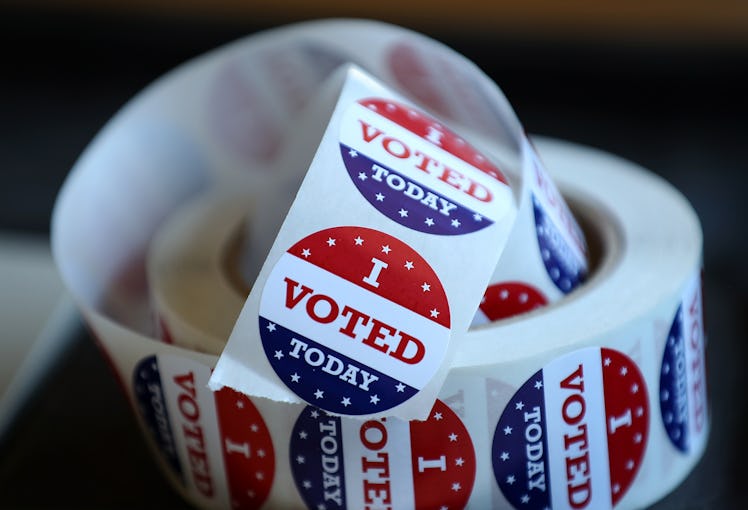
Here's How To Register To Vote Before The Election, So No Excuses
Election Day this year is Tuesday, Nov. 3, and while a presidential election year is always a pivotal moment, it looks like 2020 will be even more crucial to deciding the path for the nation. This year, you’ll get to pick or reaffirm who represents you in the White House, as well as in Congress and at the state level (depending on where you live) — but you won't get to have a say in who represents you if you're not registered to vote. If you haven't already, it's imperative that you take care of that right away, so here's how to register to vote, just in case it's your first time.
Whether you're voting for the first time or you've never registered before, it's a pretty simple process. Some of you might even be able to register without leaving your bed. If you head on over to Vote.gov you'll be prompted to pick your state, it'll then take you to a page that tells you whether your state provides online registration. For instance, if you live in New York, the site will give you a link that says "Start your online registration." From there you'll be asked to provide your New York State driver license, permit or non-driver ID number, date of birth, zip code, social security number, and email address.
If you happen to live in a state like Arkansas or Texas that does not allow online registration, then you have to print out the PDF registration form and mail it in. But not to worry, the mail-in registration is pretty much the same as the online form, except you'll have to handle real paper and mail it in by the deadline.
Of course, in order to be able to vote on Election Day this year, you must be registered to vote in advance — in most cases. That means something different in every state. In some states, such as Alabama, the registration cut off is 15 days prior to the election, while other states like Alaska and Hawaii mandate that you be registered 30 days prior to the election, which means an in-person registration or mail-in registration postmarked by Monday, Oct. 5 (and sending it earlier is better). Meanwhile, some states and regions, like Washington D.C., allow you to register in-person the same day you cast your ballot. Since the rules vary from state to state, make sure you find out what the registration deadline is for where you live — you don't want to let it slide, only to find out that you're too late. Also, make sure to double-check what documents you’ll need to bring with you, if you’re planning on same-day registration.
Now that you know everything you need in regards to registration, you might be wondering what you have to actually bring with you to vote. Well, that depends on the state as well. Some states require you to bring an ID (and some require a photo ID specifically) with you to vote, while others might just ask you to sign a document validating your identity, according to USA.gov. Those rules vary by state as well, so just make sure you check what your state requires by heading to the National Conference of State Legislatures (NCSL) website to check out the voter ID laws in your state. USA.gov does mention, though, that if you are a first-time voter who did not register in person, then you will need to bring some form of ID with you to vote.
A lot of the voting process varies by state, so just make sure that you check out all the laws for where you live ASAP so that you're not scrambling at the last minute. Because rushing is not cool, but voting definitely is.
Your voice matters. So does your vote. Make sure both are heard and counted in the 2020 election by registering to vote right now.
This article was originally published on